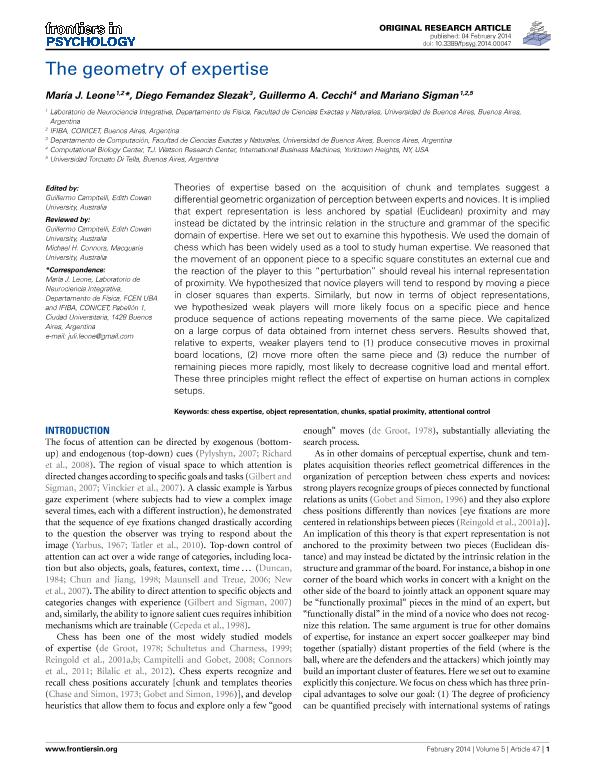Artículo
The geometry of expertise
Fecha de publicación:
02/2014
Editorial:
Frontiers Media
Revista:
Frontiers in Psychology
ISSN:
1664-1078
Idioma:
Inglés
Tipo de recurso:
Artículo publicado
Clasificación temática:
Resumen
Theories of expertise based on the acquisition of chunk and templates suggest a differential geometric organization of perception between experts and novices. It is implied that expert representation is less anchored by spatial (Euclidean) proximity and may instead be dictated by the intrinsic relation in the structure and grammar of the specific domain of expertise. Here we set out to examine this hypothesis. We used the domain of chess which has been widely used as a tool to study human expertise. We reasoned that the movement of an opponent piece to a specific square constitutes an external cue and the reaction of the player to this "perturbation" should reveal his internal representation of proximity. We hypothesized that novice players will tend to respond by moving a piece in closer squares than experts. Similarly, but now in terms of object representations, we hypothesized weak players will more likely focus on a specific piece and hence produce sequence of actions repeating movements of the same piece. We capitalized on a large corpus of data obtained from internet chess servers. Results showed that, relative to experts, weaker players tend to (1) produce consecutive moves in proximal board locations, (2) move more often the same piece and (3) reduce the number of remaining pieces more rapidly, most likely to decrease cognitive load and mental effort. These three principles might reflect the effect of expertise on human actions in complex setups. © 2014 Leone, Fernandez Slezak, Cecchi and Sigman.
Archivos asociados
Licencia
Identificadores
Colecciones
Articulos(IFIBA)
Articulos de INST.DE FISICA DE BUENOS AIRES
Articulos de INST.DE FISICA DE BUENOS AIRES
Citación
Leone, Maria Juliana; Fernandez Slezak, Diego; Cecchi, Guillermo Alberto; Sigman, Mariano; The geometry of expertise; Frontiers Media; Frontiers in Psychology; 5; 2-2014; 1-21
Compartir
Altmétricas




